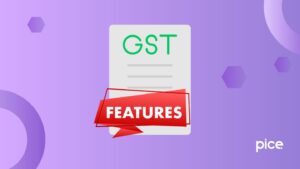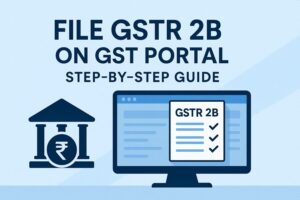Demand and Recovery Forms: DRC in GST
- 8 Jan 25
- 15 mins
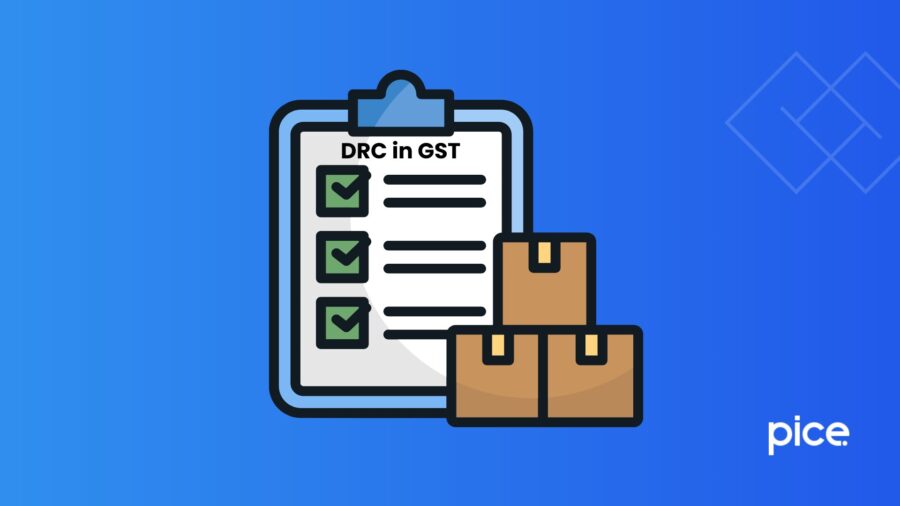
Demand and Recovery Forms: DRC in GST
Key Takeaways
- DRC Forms ensure smooth GST compliance and recovery.
- DRC-03 allows voluntary payments to avoid penalties.
- Recovery options include auctions, attachments, and notices.
- Closure and acknowledgment are done via DRC-04 and DRC-05.
- Legal actions are supported by DRC-18 and DRC-21.
Demand and Recovery Forms (DRC) are used for managing and enforcing compliance under the Goods and Services Tax regime. The demand forms range between DRC-01 and DRC-20, catering to the needs and recovery processes that include issuance of tax notices, recovery of unpaid dues, penalty imposition, resolution of disputes, and more.
Many of these forms, however, have not yet been introduced but will be in the future. There are a total of 28 DRC forms to date.
Demand Forms and Its Explanation
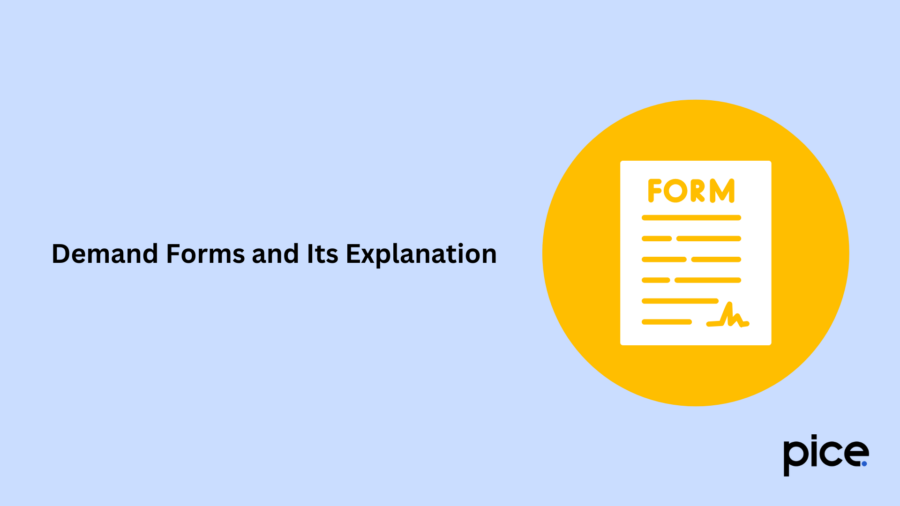
Demand forms in GST (Goods and Services Tax) are crucial for further payment of tax, its recovery, and compliance. These forms are usually issued to taxpayers in cases of non-payment of GST or the existence of any discrepancy. The forms mentioned below showcase reasons for penalties and the procedure for further resolution.
Gaining a thorough understanding of these forms is crucial for each business to address resolutions and pay dues promptly. This ensures transparency and helps streamline dispute resolution in India's indirect taxation system.
Let’s explore a detailed explanation of the demand forms in GST below:
DRC-01A
This demand form is entitled "Application for Intimation of Tax ascertained as being payable under Section 73(5)/74(5)." Following notification number 49/2019, this form has been included in the Rules dated 09th October, 2019. Through this notification, there are two sub-rules inserted, namely, Sub-rule (1A) and Sub-rule (2A) under Rule 142 of the Rules.
As per new rules, the officer under Section 73(1) or Section 74(1), before charging the Show Cause Notice (SCN), is mandated to showcase the details of the demand as mentioned in Part A of the DRC-01A form.
DRC-01
This form entails “Summary of Show Cause Notice." Any officer can upload this electronic credit ledger following the provisions of rule 100(2) and rule 142(1)(a) of the Rules. It represents a summary of notice issued under Section 52, Section 63, Section 73, Section 74, Section 122, Section 76, Section 123, Section 125, Section 124, Section 129, Section 127, and Section 130. As notified on 29th March, 2019, the old format of DRC-01 is being replaced with a new format. This is, however, effective from 1st April, 2019.
DRC-02
This form denotes "Summary of Statement." After issuance of the Show Cause Notice following Section 73(1) or Section 74(1), if any officer is willing to note details of unpaid taxes or might be short-paid under the same circumstances but maybe for any other prescribed period, then a statement can be issued under Section 73(3) or Section 74(3) of the Act.
That statement summary is usually uploaded electronically in this form. Just like the DRC-01 replacement with a new format, the DRC-02 form was also replaced and a new form was introduced, which came into effect on April 1st, 2019 as mentioned under Notification No. 16/2019-Central Tax, with the date of March 29th, 2019.
DRC-03
The DRC-03 form denotes "Intimation of payment made voluntarily or against SCN—show-cause notice or statement." The most frequently used DRC form that taxpayers have filed in majority to date in the GST regime is the DRC-03 number.
As stated under Rule 142(2) and Rule 142(3) of the Rules, the payment of taxes made either voluntarily, during serving notice, before the commencement of service, or after receiving the show cause notice or statement with DRC-01 and DRC-02, respectively, is carried out mostly through the DRC-03 form.
Considering the time limit for filing Form DRC-03, Rule 142(3) mentioned some specific time limit within which payment can be processed smoothly to complete the proceedings. For making any voluntary tax payments through the DRC-03 form, you can complete making payment at any time before issuing SCN or the required statement.
However, after the issuance of the SCN or statement under Section 73(1) or 73(3) of the Act, payment of taxes can be completed within 30 days of the issue of the SCN. There is no imposition of penalty from the corresponding officer, and the proceedings come to an end.
On the other hand, for a show cause notice or statement issued under Section 74(1) or 74(3), a penalty of 25% of the tax demanded is charged. This amount is, however, payable only if the DRC-03 balance is filed within 30 days from the date of issuance of notice.
DRC-04
This demand form entails "Acknowledgement of acceptance of payment made voluntarily." Following rule 142(2), the proper officer after receiving the payment done through DRC-03, issues an acknowledgement slip stating the acceptance of payment.
This kind of acceptance is, however, usually carried out through this form only. Waiting for any proper officer to acknowledge the payment process, however, doesn't restrict any taxpayers from processing another payment through DRC-03.
DRC-05
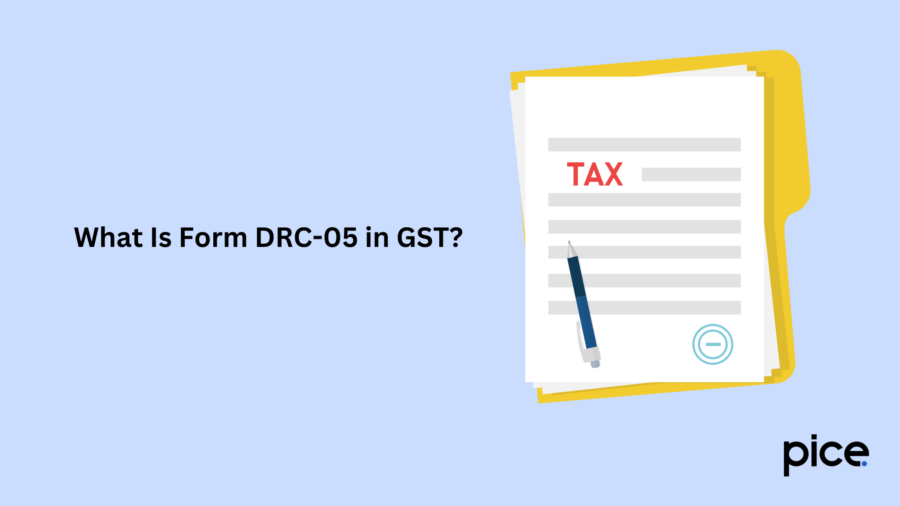
This form displays "Intimation of the conclusion of proceedings." The officer issues this form after being satisfied with receiving voluntary payment details from the registered taxable individuals following provisions of Rule 142(3) of the Rules, stating further details regarding the closing of proceedings initiated by the officer.
DRC-06
This form is regarding “Reply to the Show Cause Notice." Following Rule 142(4), the taxpayers can file this form in reply to the issuance of SCN and the summary uploaded in DRC-01 electronically. However, if there are situations where a taxpayer prefers a personal hearing, it will be feasible to communicate it to the adjudicating authority through the DRC-06 form.
DRC-07
The DRC-07 form is all about stating “Summary of the Order." Following Rule 142(5), an officer uploads this form electronically once and after completing issuance of the final order under Section 52 or Section 63 or Section 62 or Section 64 or Section 73 or Section 75 or Section 76 or Section 123 or Section 122 or Section 124 or Section 125 or Section 129 or Section 127 or Section 130 under the Act.
The amount of tax paid considering the interest and penalty is mentioned in detail in this form. Upon submission of the DRC-07 form to the GSTN through an API, a demand ID is created and listed under the Liability Register Part II (other than returns relating to demand liabilities).
DRC-07A
This demand form entails a "Summary of the order creating demand under existing laws". This form was mentioned in the Rules through Notification Number 60/2018 dated 30th October, 2018. This came into force effective from 30th October, 2018. Following this, a sub-rule (A) was included in Rule 142.
According to the new rule 142(A)(1), if any amount can be recovered from any proceedings launched under existing law or after the day of appointment, which is not yet recovered under that law but is possible to recover, and the officer uploads the summary of that order in DRC-07A, and the then corresponding demand of that order is being posted in part II listed under the electronic liability register in form GST PMT-01.
DRC-08
This demand form states "Summary of Rectification/Withdrawal Order". After finalizing the order, the proper officer can upload the form DRC-08 electronically if he chooses to make further rectifications or withdraw the final order passed along with uploading the summary in DRC-07. Any order can be rectified under Section 161 of the Act. However, the order must be rectified within six months from the date of issuance of the order.
DRC-08A
DRC-08A is all about “Amendment/Modification of order summary leading to demand under existing laws”. Similar to DRC-07A, this form is also included in the Rules section through published Notification number 60/2018 dated 30th October, 2018. This form is considered and included in the Rules effective from 30th October, 2018.
Under the new rule 142(A)(2), if there is any order of demand uploaded with a summary under DRC-07A and undergone rectification or modification in any proceedings in any of the redressal forums such as appeal or recovery made under the existing law then it is the due responsibility of the proper officer after issuance of the rectified order.
Recovery Forms and Their Explanation
Here is a detailed overview of the recovery forms with a full explanation of each:
DRC-09
This recovery form details “Order for recovery through any officer under Section 79”. This
notice can be issued to a "specified officer" for amount recovery through amount deduction from any money owed to the defaulter as applicable under Section 79(1)(a).
On the other hand, for specified officer, explanation is provided in Rule 143 as “specified officer shall mean any officer of the Central Government or a State Government or the Government of a Union territory or a local authority, or of a Board or Corporation or a company owned or controlled, wholly or partly, by the Central Government or a State Government or the Government of a Union territory or a local authority.”
DRC-10
This form is regarding “Notice relating to Auction of Goods under Section 79(1)(b) of the Act”. There are several ways of recovering the government's dues from the defaulter. One such particular way is through the sale of the goods of the defaulter, which lies under the control of the proper officer, following the provisions of Section 79(1)(b) of the Act.
Those goods can further be sold through auction, and that might include e-auction. The DRC-10 form is issued specifically by the proper officer as applicable under Rule 144(2) of the Rules.
DRC-11
DRC-11 form is about entailing a detailed "Notice to the Successful Bidder." After issuance of the DRC-10 form, the proper officer conducts the public auction following Rule 144. The proper officer can also call for an auction publicly as per Rule 147. The pre-deposit amount can be determined accordingly by the proper officer.
DRC-12
DRC-12 is all about the "Sale Certificate." The proper officer issues this form to the successful bidder after getting the final payment from the successful bidder following the rules as specified. This sale certificate includes detailed information about the goods,
the bidder details, the date of transfer, and the amount to be paid upon issuing the sale certificate.
DRC-13
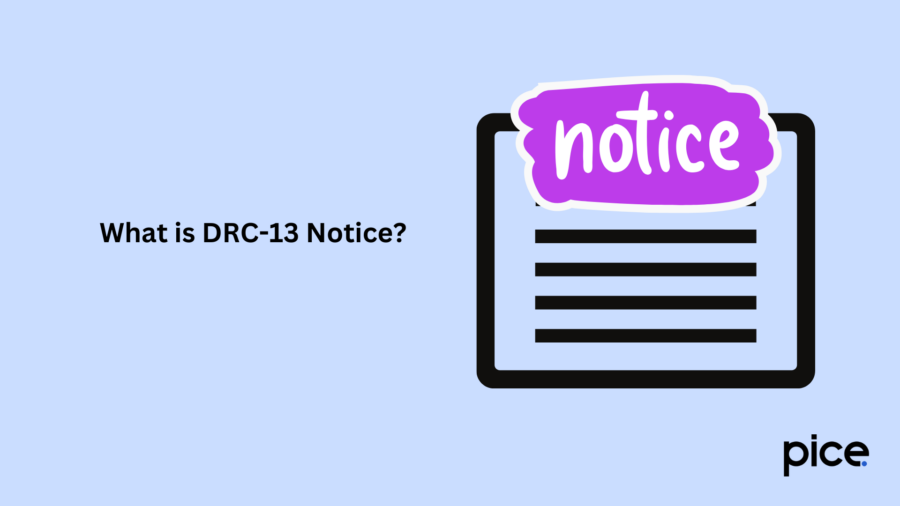
DRC-13 form is all about issuing a "Notice to a third person under Section 79(1)(c)". Another way following which the amount can be recovered is through debtors or any other individual from whom there is a certain amount due or who may have taken on the responsibility of holding money for the defaulter.
These kinds of individuals are addressed as "the third person" in the Rules. The proper officer might be responsible for serving notice to a third person as mentioned, instructing him to pay the required amount to the defaulter or to the liability extent of the defaulter to the respective government, which one will be less. Thus, this form is issued following rule 145(1) for serving notice to the third person.
DRC-14
DRC-14 form entails a "Certificate of Payment to a Third Person." After receiving notice in DRC-13, an individual is bound to follow that notice, and failure to make the necessary payment results in a defaulter to the government following Section 79 of the Act. However, following 145(2), if the third person pays the desired amount as mentioned in DRC-13, a certificate is issued by the proper officer indicating the amount and other liability details.
DRC-15
This form is about “Application before the Civil Court posing a request of execution for a decree." Another alternative method of recovery proceeding is recovery through the execution of a civil decree. Following Rule 146, if a defaulter is likely to receive any desired amount for execution of a decree of a civil court, for making payments further, or for the sale of a mortgage, the proper officer has the liability of requesting the magistrate/judge of the concerned court for executing the decree and for crediting the net proceeds from that decree to the government for settling the recoverable amount from the default person.
The court thereby abided to follow the request as per the provisions of the Code of Civil Procedure. For requesting the court, this form is issued by the proper officer.
DRC-16
This form provides “Notice for attachment and sale of movable/immovable/shares under Section 79”. Any movable or immovable property existing under the defaulter's control should be attached until the due amount is under Section 79(d) of the Act. After such attachment on non-recovery of the amount, the proper officer can recover the amount through the sale of property.
DRC-17
This form is about “Notice for Auction of Movable/Immovable Property under Section 79(1)(d)”. The proper officer through auction can sell the immovable properties, including e-auction. The defaulter particularly receives this notice for selling of property and meeting the purpose of sales. DRC-17 is governed by Section 79(d) and the property to be sold in the auction is mentioned therein.
DRC-18
DRC-18 entails "Certificate action under Clause (e) of subsection (1) Section 79". The proper officer is instructed under Section 79(1)(e) to recover dues through the land revenue authority. Furthermore, the tax officer can ask the collector to collect the dues of the defaulter through the issuance of a certificate. The certificate is then issued further abiding by provisions of Rule 155.
DRC-19
This form addresses "Application to the Magistrate for Recovery as Fine". Following the provisions of Section 79(1)(f), the magistrate can recover the dues of the defaulter as a fine under the Code of Criminal Procedure, 1973. Alongside this, the proper tax officer can also apply to the magistrate through this form.
DRC-20
This form is about "Application for Deferred Payment/Payment in Instalments". The taxpayer files this form electronically to receive any payment details due under
this Act. The taxable person can apply to the commissioner under Section 80 of the Act asking for permission for an extension of the maximum time period. The instalment number should not exceed 24 and the amount in this case will be payable along with interest.
DRC-21
DRC-21 is about "Order for acceptance/rejection of application for deferred payment/payment in instalments." Here, the Commissioner calls for a report from the jurisdictional officer of the taxpayer stating the capability of tge taxpayer to pay the due amount. The commissioner might accept the taxpayer's proposal filed in DRC-20.
DRC-22
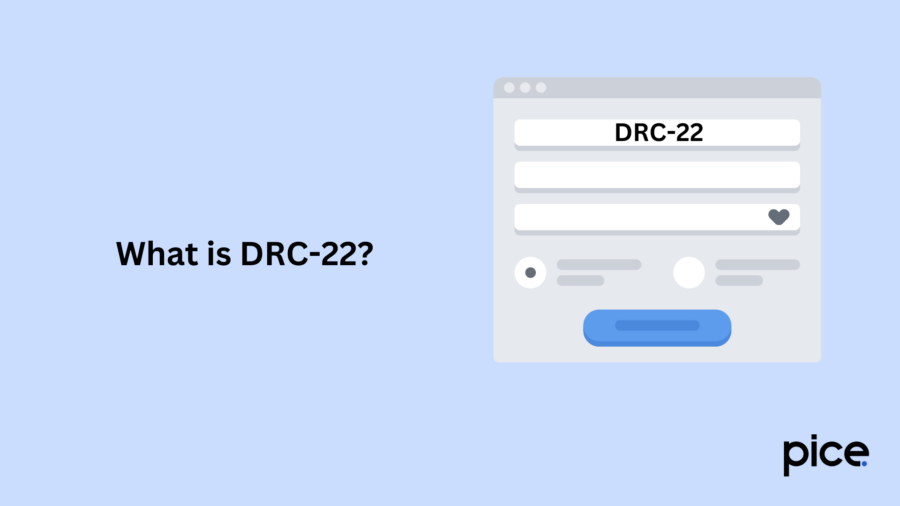
DRC-22 provides information about "provisional attachment of property under Section 83." Under this section, attaching any property of the taxpayer with the bank account is done by the commissioner A copy of such order is also issued by the commissioner to the respective revenue authority for placing impediment on the attached property.
DRC-23
DRC-23 form entails details of “Restoration of provisionally attached property/bank account under Section 83”. If the attached property is found to be hazardous, the commissioner can restore the property immediately. However, if the property is no longer valuable for attachment, the commissioner can release it under Rule 159(6) of the Rules.
DRC-24
DRC-24 form entails “Application for Intimation to Liquidator for Recovery of Amount." The Commissioner within three months should notify the liquidator which the company is likely to pay, applicable under Section 88(2). These kinds of notifications are issued through DRC-24 under Rule 160.
DRC-25
DRC-25 form is all about “Continuation of Recovery Proceedings”. A revised notice of demand is sent to the taxpayer for the due amount to be paid to the government. If the due amount is however reduced by any proceeding, then also a fresh notice of demand should be issued. This form is thus issued for reducing or enhancing demand response to notices as per Rule 161.
Conclusion
The DRC forms play an important role towards ensuring accountability in the GST framework. Through the facilitation of transparency and recovery mechanisms, these 28 forms hold the integrity of the taxation system, thereby leading to error minimization and disputes. Gaining a proper understanding of these forms is essential for both taxpayers and businesses to avoid further legal complications.
💡If you want to streamline your payment and make GST payments, consider using the PICE App. Explore the PICE App today and take your business to new heights.
 By
By 











